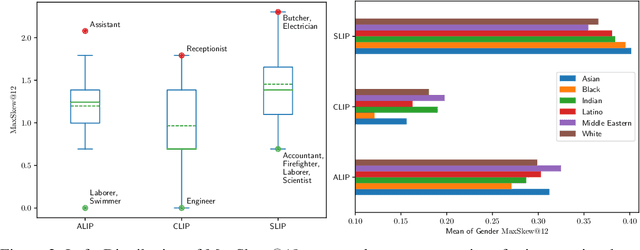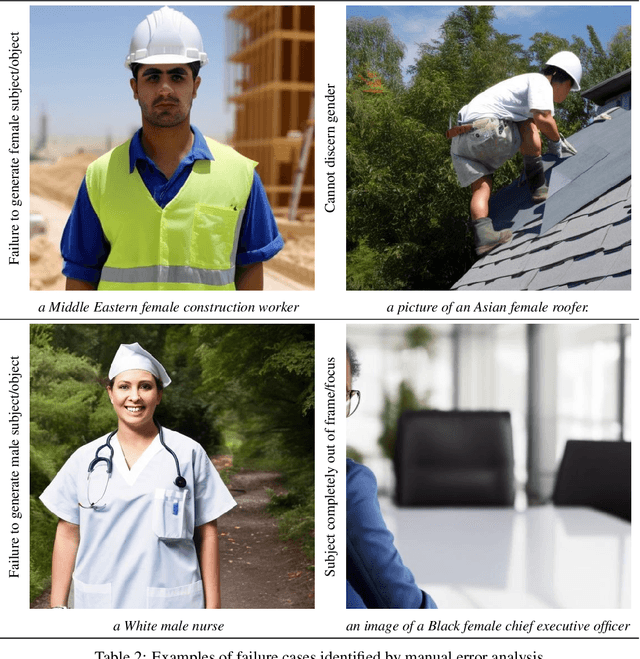Probing Intersectional Biases in Vision-Language Models with Counterfactual Examples
Paper and Code
Oct 04, 2023



While vision-language models (VLMs) have achieved remarkable performance improvements recently, there is growing evidence that these models also posses harmful biases with respect to social attributes such as gender and race. Prior studies have primarily focused on probing such bias attributes individually while ignoring biases associated with intersections between social attributes. This could be due to the difficulty of collecting an exhaustive set of image-text pairs for various combinations of social attributes from existing datasets. To address this challenge, we employ text-to-image diffusion models to produce counterfactual examples for probing intserctional social biases at scale. Our approach utilizes Stable Diffusion with cross attention control to produce sets of counterfactual image-text pairs that are highly similar in their depiction of a subject (e.g., a given occupation) while differing only in their depiction of intersectional social attributes (e.g., race & gender). We conduct extensive experiments using our generated dataset which reveal the intersectional social biases present in state-of-the-art VLMs.
 Add to Chrome
Add to Chrome Add to Firefox
Add to Firefox Add to Edge
Add to Edge